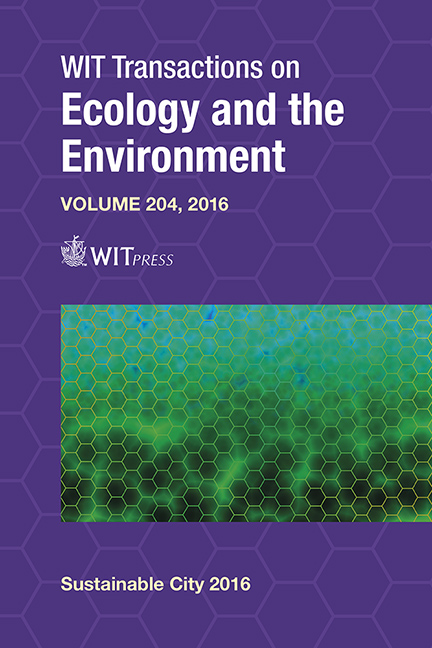City-integrated Photovoltaics Sustainably Satisfy Urban Transportation Energy Needs
Price
Free (open access)
Transaction
Volume
204
Pages
9
Page Range
559 - 567
Published
2016
Size
682 kb
Paper DOI
10.2495/SC160471
Copyright
WIT Press
Author(s)
D. A. Sunter, P. M. Berkeley, D. M. Kammen
Abstract
Over half the world’s population lives in urban settings, and transportation within these regions is responsible for a substantial portion of global pollution and energy expenditures. The electrification of urban transportation offers several benefits including improved urban air quality, reduced noise, and decreased dependence on fuel imports and volatile fuel prices. Additionally, electrification programs centered in urban regions present an opportunity to provide a high degree of mobility at reduced environmental impact. However, the global environmental benefit of electrifying urban transportation will largely depend on using electricity generation sources that produce minimal emissions, such as photovoltaics. In this paper, we studied the feasibility of satisfying all urban transportation energy needs with city-integrated photovoltaics for 87 cities from 43 countries with highly varied solar resources. Of the cities studied, 11 were able to satisfy their transportation needs by covering less than 5% of the city land area with photovoltaics. Nearly half of the cities (40 cities) were able to meet their needs with less than 10% covered and the majority of cities (84%) could do so with less than 15% covered. As one would expect, cities with greater annual solar insolation generally required less photovoltaic coverage. However, annual solar insolation was not the most significant factor. Data mining with an extra-trees regressor was performed to determine the relative importance of over 200 city attributes. These attributes included factors related to urban form, existing transportation infrastructure and investment, behavioral patterns, time and energy efficiency of a variety of modes of transportation, and transportation pricing and fines. Based on relative attribute importance, policy recommendations are offered for both existing and emerging cities.
Keywords
urban transportation, city-integrated photovoltaics, sustainability, extra-trees regressor





